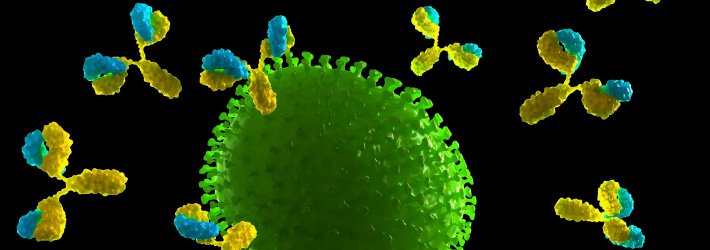On January 16, 2024, the PTAB issued a Final Written Decision in a post-grant review (“PGR”) of claims in U.S. Patent No. 10,808,039 (the “’039 patent”) owned by Seagen Inc. (“Seagen”). PGR2021-00030 was filed by Daiichi Sankyo, Inc. (“Daiichi”) and AstraZeneca Pharmaceuticals LP (collectively, “Petitioners”), requesting review of claims 1-5, 9, and 10 directed to antibody-drug conjugates. This dispute is between two biologic competitors, Daiichi (drug: Enhertu® (fam-trastuzumab deruxtecan-nxki) and Seagen (drug: Adcetris® (brentuximab vedotin)). The PTAB found the challenged claims unpatentable.
A brief overview of the history of related litigations and PGRs involving the ’039 patent is summarized below.
On October 19, 2020, Seagen filed an infringement lawsuit against Daiichi in the Eastern District of Texas on the ’039 patent. Seagen Inc. v. Daiichi Sankyo Co., Ltd., No. 2:20-cv-00337 (E.D. Tex.). About a month later on November 13, 2020, Daiichi and AstraZeneca filed a declaratory judgment lawsuit against Seagen in the District of Delaware, which was stayed while the Texas lawsuit was ongoing. Daiichi Sankyo, Inc. et al. v. Seagen Inc., No. 1:20-cv-01524 (D. Del.). The Petitioners then filed two PGRs on the ’039 patent; PGR2021-00030 filed on December 23, 2020 challenging claims 1-5, 9, and 10, and PGR2021-00042 filed on January 22, 2021 challenging claims 6-8. The PTAB denied institution of both PGRs under the NHK-Fintiv factors because of the pending parallel district court litigation (PGR2021-00030, PGR2021-00042). Seagen then dropped claims 6-8 (which are the subject of PGR2021-00042) from the Texas infringement lawsuit. The Petitioners then filed requests for rehearing in the PTAB of the institution decisions (PGR2021-00030, PGR2021-00042), arguing that because some of the claims were no longer at issue in the parallel district court litigation, the PGRs should be instituted. The PTAB granted the Petitioners’ requests for rehearing and instituted both PGRs (PGR2021-00030, PGR2021-00042).
The day after the PGRs were instituted, a jury in the Texas infringement lawsuit found claims 1-5, 9, and 10 (the claims that are challenged in PGR2021-00030) valid and infringed. After the verdict, Seagen filed a second request for rehearing at the PTAB arguing that institution of PGR2021-00030 should be denied because the jury found the claims valid under the same grounds presented in the petition. Seagen then disclaimed claims 6-8 and requested adverse judgment in PGR2021-00042, which challenged those claims. The PTAB granted the request for rehearing in PGR2021-00030 and denied institution, and it entered adverse judgment against Seagen in PGR2021-00042.
Upon the PTAB’s issuance of a new guidance on how Fintiv should apply to IPRs and PGRs, the Petitioners filed a third request for rehearing of the PGR2021-00030 denial of institution decision, arguing that the Board had found “strong merits” for the enablement challenge that would outweigh considerations of the parallel litigation under the new guidance. The Board agreed and re-instituted PGR2021-00030.
In PGR2021-00030, Petitioners challenge claims 1-5, 9, and 10 of the ’039 patent as being unpatentable for lack of written description, enablement, and indefiniteness under 35 U.S.C. §112, and anticipation under 35 U.S.C. §102.
Regarding anticipation, the PTAB found that Petitioners demonstrated that “the ’039 patent should not receive benefit of priority to the earlier filings because the priority applications lack descriptive support for the Ww [amino acid] element” in claim 1, the sole independent claim, because, inter alia, the priority applications provide only an “undifferentiated description. . . [that] failed to provide sufficient ‘blaze marks’ to guide a reader through the forest of disclosed possibilities toward the claimed compound, which resided among the myriad others that also could have been made.” The PTAB found that because the ’039 patent did not benefit from its priority applications, the ’039 claims were anticipated by intervening prior art disclosing an ADC species within the ’039 patent claimed ADC genus.
With respect to written description, the Petitioners argued that the claims “do[] not describe the full scope of th[e] claimed genus” of antibody-drug conjugates (“ADCs”) because the patent disclosures are limited to ADCs containing a particular class of ADCs, and further do not describe the genus of claimed Ww element of the ADC nor common structural features within the drug moiety genus.
The PTAB rejected the Petitioners’ ADC argument finding that the ’039 patent discloses “an extensive list of known chemotherapeutic agents whose structures were all known in the prior art.” Based on that disclosure, the PTAB distinguished this case from the written description issue in Juno Therapeutics, Inc. v. Kite Pharma, Inc., 10 F.4th 1330, 1338 (Fed. Cir. 2021) where the claims were drawn to single-chain antibody variable fragments (“scFVs”) that the patent at issue in that case failed to describe “which scFVs bind to which targets.”
The PTAB, however, did agree with the Petitioners’ argument that the ’039 patent failed to provide written description support for the claimed Ww subgenus, for the same reasons as in the ’039 patent priority challenge.
With respect to enablement, the PTAB found that undue experimentation would be required to make and use the claimed invention in view of, among other reasons, the “large breadth of the claims, absence of working examples, limited amount of direction and guidance provided by the ’039 patent, unpredictability in synthesizing antibody-drug linker conjugates, and extensive quantity of experimentation.”
Regarding indefiniteness, the PTAB rejected the Petitioners’ indefiniteness challenge, finding that the ’039 patent claims “set forth the subject matter which the inventor regards as the invention.”
Seagen has indicated that it intends to appeal the PTAB decision.
We continue to monitor this PGR. For more information about biosimilar-related patent disputes, please visit BiologicsHQ.
_____________________________________________________
The authors would like to thank April Breyer Menon for her contributions to this article.


